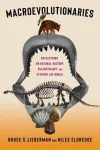RNA editing plays critical role in fruit flies’ sense of smell and social interactions
Without this tweaking mechanism flies cannot detect odors that warn of danger or engage in social interactions necessary for survival
2024-09-04
(Press-News.org)
Imagine your DNA as a set of instructions or a recipe book that tells your body how to make everything it needs to function, from proteins to cells. Every time the body needs to build something, it reads these instructions. But sometimes, the body can make small edits to these instructions—this is where RNA editing comes in.
RNA editing is like a proofreading process that happens after your DNA’s instructions are copied. Instead of just following the recipe exactly, your cells can make tiny changes to the instructions. These changes can help the body adapt to different situations by creating new versions of proteins that might be better suited to certain tasks.
In humans and fruit flies alike, RNA editing prevents autoimmune responses and adjusts protein functions. However, in humans, most editing occurs in non-coding regions, with only a small fraction leading to changes in protein function. In contrast, in flies, the majority of RNA editing events occur in sequences that directly produce proteins.
Given the abundance of RNA editing events that lead to changes in protein-coding sequences in flies, a major challenge is determining which of these thousands of events is biologically important and worth investigating.
Researchers from Bar-Ilan University in Israel have now pinpointed one such event and determined its pivotal role in the sense of smell and social interactions of Drosophila (fruit flies). Their findings of their study were published today in the journal Science Advances.
In selecting the particular editing event to investigate, the research team focused on editing events evolutionarily conserved for millions of years across multiple Drosophila species, they narrowed down their search to a specific event in the GluClα channel likely to have significant functional importance. This event, in which Isoleucine is edited to Valine, is crucial for the ability of flies to sense odors for social interactions that depend on sensing pheromones, small molecules that allow communication between individuals.
To test the importance of the site, the researchers used CRISPR technology to abolish RNA editing. This was followed by a battery of behavioral tests which strongly and repeatedly revealed that flies with unedited RNA struggled with their sense of smell and social communication. Flies with the unedited GluClα channel exhibited impaired ability to be attracted to smells of apple juice or alcohol, and to avoid smells that warn them of danger. They also exhibited impaired social interaction capabilities which are necessary for survival and reproduction.
Further analysis pinpointed specific neurons in the brain responsible for processing odors that were affected by the lack of RNA editing. The researchers proposed a model to explain how editing at different locations in the GluClα channel helps it function correctly, and why editing is necessary instead of just constant mutation.
“Our findings highlight how essential RNA editing is for normal behavior,” said Prof. Galit Shohat-Ophir, of Bar-Ilan University’s Goodman Faculty of Life Sciences, Gonda Brain Research Center and Nanotechnology Institute. “We were surprised by how strongly and consistently the lack of editing impacted the flies. This underscores just how critical these tiny changes are for the expression of complex behaviors,” added Prof. Shohat-Ophir, who led the study with graduate student Hila Zak, in collaboration with Tel Aviv University Prof. Moshe Parnas, Stanford University Prof. Jun Billy Li, and Dr. Yoav Pass, of Bar-Ilan University.
This study highlights the enormous potential and importance of RNA editing in shaping the physiology and behavior of animals. In future research Prof. Shohat-Ophir hopes to discover how the editing level is regulated to allow flexibility to respond to environmental changes and internal needs.
This research was funded by the US-Israel Binational Science Foundation (BSF).
END
ELSE PRESS RELEASES FROM THIS DATE:
2024-09-04
LOS ANGELES — Oncology specialists at City of Hope®, one of the largest and most advanced cancer research and treatment organizations in the United States, can now provide leading-edge clinical guidance to patients living in Southeast Asia through a second opinion collaboration agreement with the Healthway Cancer Care Hospital, the first comprehensive cancer hospital in the Philippines. This strategic integration of services will enhance Southeast Asia’s access to world-class cancer care by leveraging the strengths of both institutions.
“With ...
2024-09-04
Charging stations for electric vehicles are essential for cleaning up the transportation sector. A new study by MIT researchers suggests they’re good for business, too.
The study found that, in California, opening a charging station boosted annual spending at each nearby business by an average of about $1,500 in 2019 and about $400 between January 2021 and June 2023. The spending bump amounts to thousands of extra dollars annually for nearby businesses, with the increase particularly pronounced for businesses in underresourced areas.
The study’s authors hope the research paints a more holistic picture of the benefits ...
2024-09-04
LAWRENCE — A new book of natural history essays co-written by a University of Kansas paleontologist has been published by Columbia University Press.
Bruce Lieberman, Dean’s Professor of Evolutionary Biology and senior curator of invertebrate paleontology at KU, co-wrote “Macroevolutionaries” with fellow paleontologist Niles Eldredge in the tradition of their late Harvard mentor and famed science popularizer, Stephen Jay Gould.
“Gould inspired me and my collaborator on the book, Niles Eldredge,” Lieberman said. “He’s a well-known evolutionary ...
2024-09-04
Summer 2024 is on track to be the hottest on record for hundreds of cities across the U.S. and globe. Even in Antarctica, during the peak of its winter, extreme heat pushed temperatures in parts of the continent more than 50°F above the July normal.
In a study published on July 31 in the journal Earth’s Future, scientists, including researchers at the University of Colorado Boulder, revealed how heat waves, especially those occurring in Antarctica’s cold seasons, may impact the animals living there. The research illustrates how extreme weather events intensified by climate change could have profound implications for the ...
2024-09-04
Injury-related mortality rates, including firearm-related deaths, among children and adolescents increased in almost every state between 2018-2022, according to findings from the University of Michigan.
Researchers from the U-M Institute for Firearm Injury Prevention analyzed mortality data from the U.S. Centers for Disease Control and Prevention's Wide-ranging Outline Data for Epidemiologic Research and found that nearly 90% of states saw an increase in mortality rates among children and adolescents overall during the study period.
North Dakota's numbers show the largest increase among states at 65% and Rhode Island saw the largest decrease ...
2024-09-04
It’s 7 billion years ago, and the universe’s heyday of star formation is beginning to slow. What might our Milky Way galaxy have looked like at that time? Astronomers using NASA’s James Webb Space Telescope have found clues in the form of a cosmic question mark, the result of a rare alignment across light-years of space.
“We know of only three or four occurrences of similar gravitational lens configurations in the observable universe, which makes this find exciting, as it demonstrates the power of Webb and suggests maybe now we will find ...
2024-09-04
Three common variants increase the risk of Wolff-Parkinson-White syndrome
Study by scientists at deCODE genetics/Amgen and collaborators in Denmark and the USA, on the genetics of accessory conduction pathways in the heart (Wolff-Parkinson-White syndrome), reveals that accessory pathways can cause rhythm disturbances, characterized by an overly fast heartbeat, which can be life-threatening.
Accessory pathways are found among around 0.3% of individuals, but their prevalence is likely higher as a majority of them do not cause symptoms that lead to diagnosis. It is believed that other individual factors can influence the likelihood of developing rhythm ...
2024-09-04
Washington, D.C., September 4, 2024—Elise Boddie, James V. Campbell Professor of Law at the University of Michigan Law School, has been selected by AERA to present the 2024 Brown Lecture in Education Research. Her lecture, titled “Brown v. Board of Education and the Democratic Ideals,” will take place on Thursday, October 24, 6:30 p.m. ET, at Howard University in Washington, D.C., and will be livestreamed. Registration for in-person attendance and for the livestream will open in early September. The event is free and ...
2024-09-04
BIRMINGHAM, Ala. – Chris Brown, Ph.D., is a former researcher who now heads research administration at a university with more than $780 million in research expenditures. Yet Brown — like other research administrators across the nation — had to learn his profession on the job because there is no complete, formal, recognized career training for the thousands of people who have a version of “research administrator” in their titles.
To fill this critical gap, Brown, vice president for Research at the University of Alabama at Birmingham, will lead a three-year, ...
2024-09-04
Images
Much of the nation's stormwater infrastructure, designed decades to a century ago to prevent floods, can exacerbate flooding during the severe weather events that are increasing around the globe, new research led by the University of Michigan demonstrates.
The problem lies in traditional planning's failure to recognize flood connectivity: how surface runoff from driveways, lawns and streets—and the flows in river channels and pipes—are all interlinked. The result ...
LAST 30 PRESS RELEASES:
[Press-News.org] RNA editing plays critical role in fruit flies’ sense of smell and social interactions
Without this tweaking mechanism flies cannot detect odors that warn of danger or engage in social interactions necessary for survival





